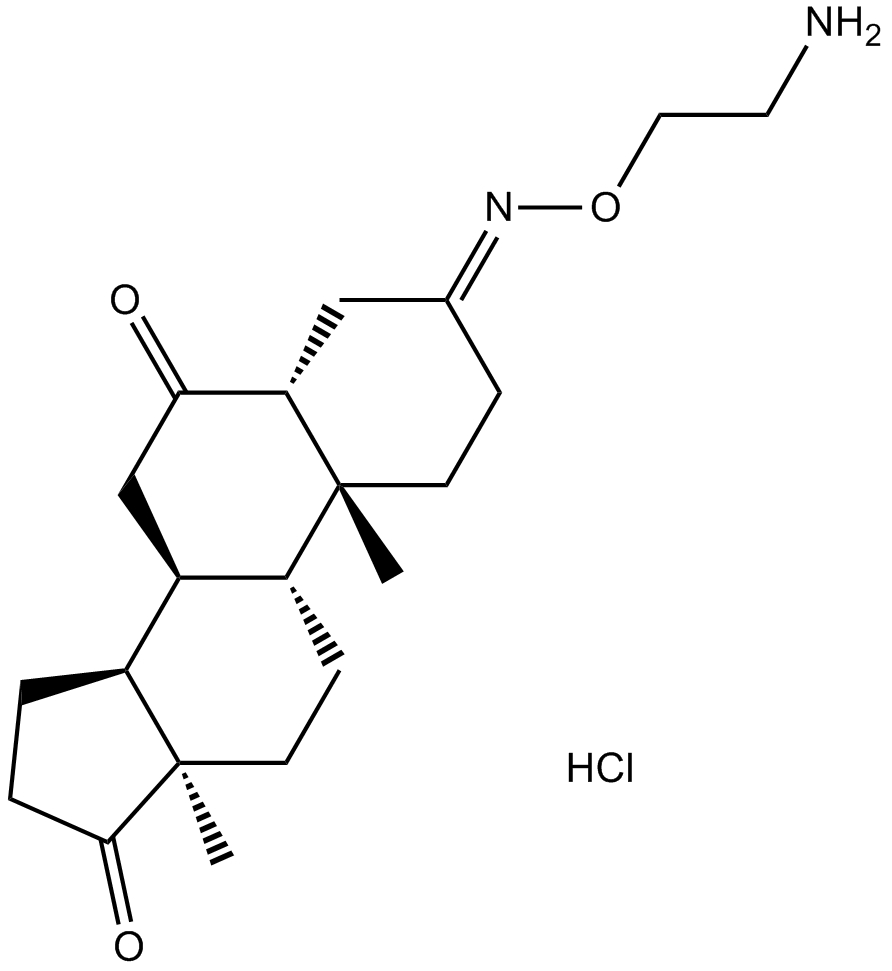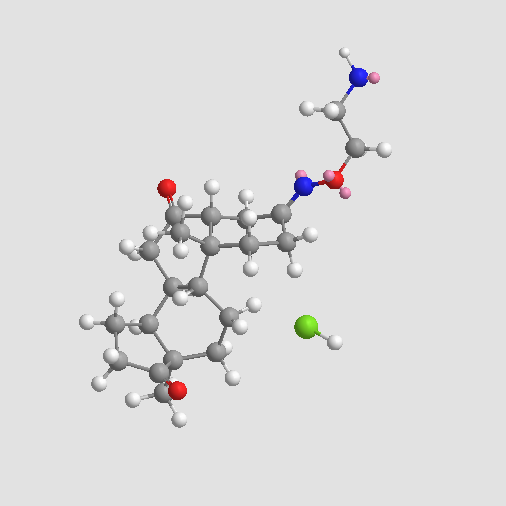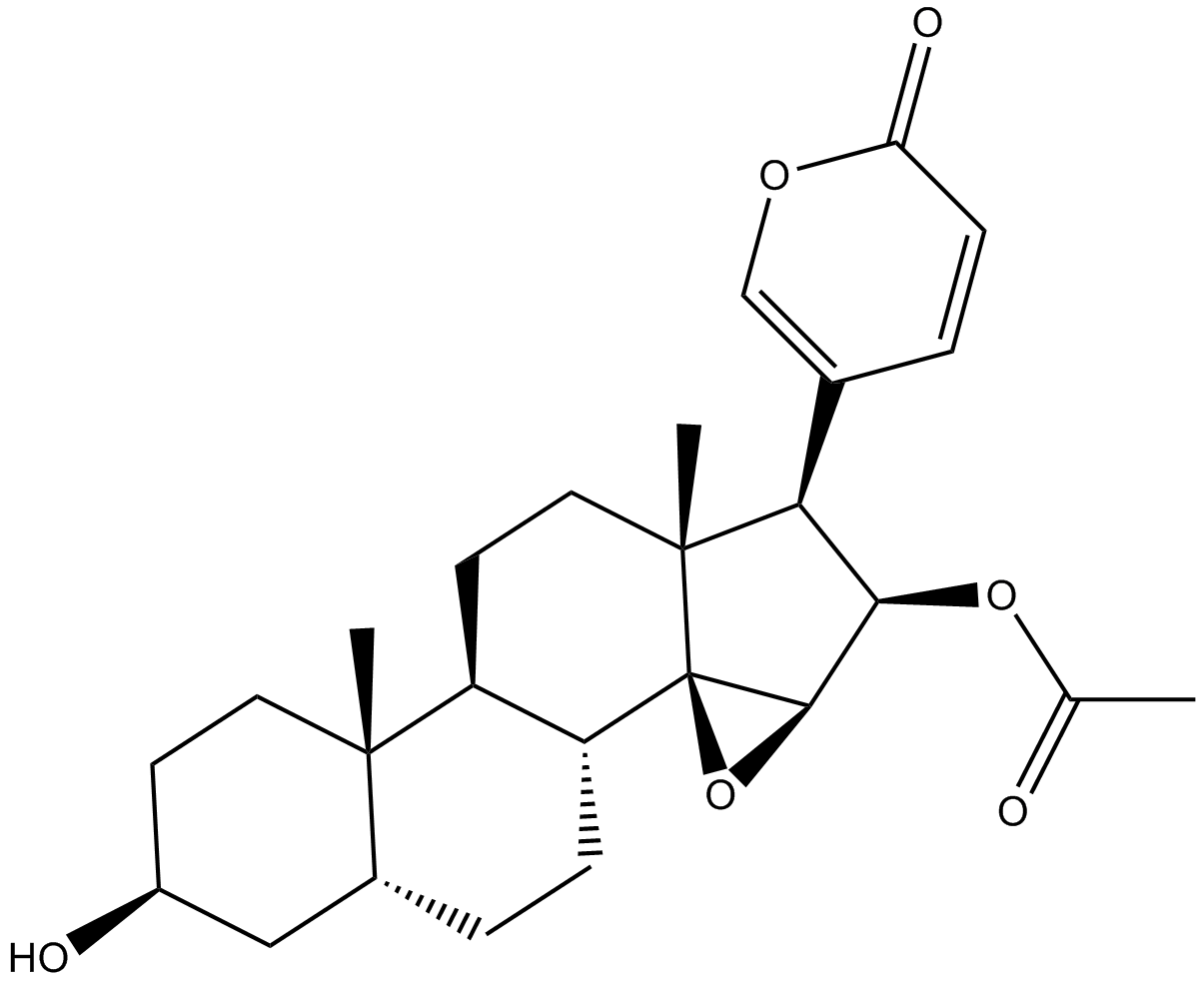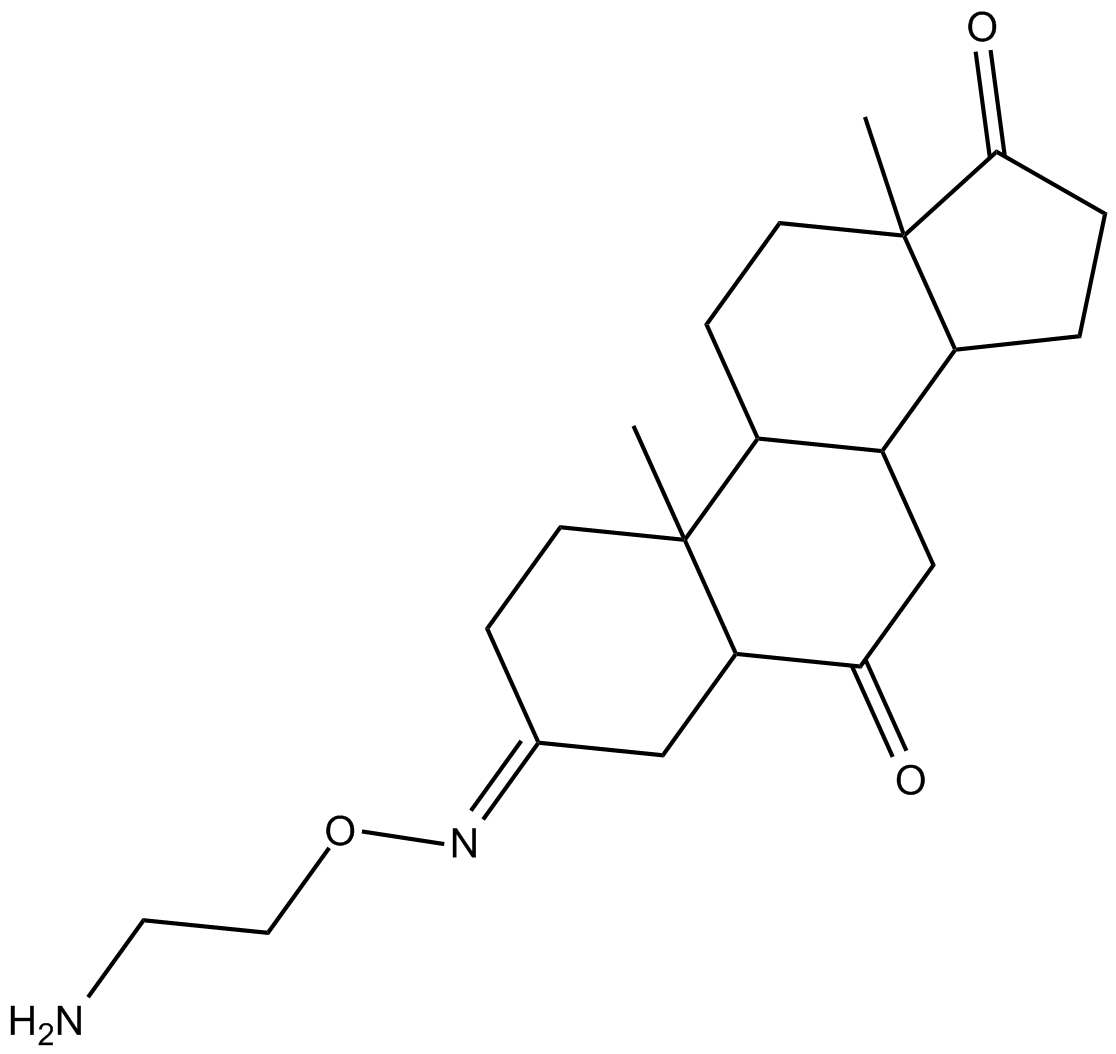Istaroxime hydrochloride
Istaroxime hydrochloride(PST2744) is a novel inhibitor of Na+/K+-ATPase with IC50 value of 0.43±0.15μM [1].
In vitro studies show that Istaroxime can inhibit the activity of Na+/K+-ATPase from dog kidney without significant interaction with other several receptors. It demonstrates the selectivity of Istaroxime. Ex vivo studies show the inotropic effect can be achieved up to 60% for Istaroxime. Istaroxime can also increase the force of contraction of guinea pig paced left atria in the range 0.3 to 30μM. In vivo assays prove Istaroxime is consistently safer than digoxin [1].
Istaroxime is a steroidal drug unrelated to cardiac glycosides that improves cellular calcium cycling. The inhibition of Na+/K+-ATPase induces cytosolic calcium accumulation during systole (inotropism). Clinical studies has been done with istaroxime in phase II. Istaroxime could be a promising alternative for patients with acute heart failure syndrome for whom the therapeutic options are currently limited [2].
References:
[1] R. Micheletti, G. G. Mattera, M. Rocchetti, A. Schiavone, M. F. Loi, A. Zaza, R. J. P. Gagnol, S. De Munari, P. Melloni, P. Carminati, G. Bianchi, and P. Ferrari. Pharmacological profile of the novel inotropic agent (e,z)-3-((2-aminoethoxy)imino)androstane-6,17-dione hydrochloride (PST2744). The journal of pharmacology and experimental therapeutics. 2002, 303 (2): 592-600.
[2] Suruchi Aditya, Aditya Rattan. Istaroxime: A rising star in acute heart failure. Journal of Pharmacology and Pharmacotherapeutics. 2012, 3(4): 353-355.
| Storage | Store at -20°C |
| M.Wt | 396.95 |
| Cas No. | 374559-48-5 |
| Formula | C21H33ClN2O3 |
| Synonyms | PST-2744 (hydrochloride);PST 2744 (hydrochloride);PST2744 (hydrochloride) |
| Solubility | Soluble in DMSO |
| Chemical Name | (5S,8R,9S,10R,13S,14S)-3-(2-aminoethoxyimino)-10,13-dimethyl-1,2,4,5,7,8,9,11,12,14,15,16-dodecahydrocyclopenta[a]phenanthrene-6,17-dione;hydrochloride |
| SDF | Download SDF |
| Canonical SMILES | C[C@](CC1)([C@@H](CC2)[C@H](C3)[C@H]1[C@@](C)(CC/C(\C1)=N\OCCN)[C@H]1C3=O)C2=O.Cl |
| Shipping Condition | Small Molecules with Blue Ice, Modified Nucleotides with Dry Ice. |
| General tips | We do not recommend long-term storage for the solution, please use it up soon. |
| Cell experiment: [1] | |
|
Cell lines |
Guinea pig ventricular myocytes |
|
Preparation method |
The solubility of this compound in DMSO is >10 mM. General tips for obtaining a higher concentration: Please warm the tube at 37 °C for 10 minutes and/or shake it in the ultrasonic bath for a while.Stock solution can be stored below -20°C for several months. |
|
Reaction Conditions |
4 μM, 0.5 s |
|
Applications |
Resting Ca2+ was similarly increased by istaroxime (from 61.3 to 92.4 nM). Istaroxime increased [Ca]SR-tot by 47%. Istaroxime increased the amount of Ca2+ extruded by the Na+/Ca2+ exchanger (CaNCX) during caffeine-induced transients (+130). Istaroxime shortened the time elapsing between the start of the caffeine pulse and SR Ca2+ release. |
| Animal experiment: [2] | |
|
Animal models |
Bio TO.2 hamsters and Bio F1B hamsters |
|
Dosage form |
Oral administration, 30 mg/5 mL/kg/day |
|
Applications |
Heart function of istaroxime-treated hamsters was comparable to that of healthy animals, and had a significantly higher LVSP and both positive and negative dP/dT when compared with that of vehicle-treated animals. Coronary flow rate in hearts isolated from istaroxime-treated hamsters was higher than that from vehicle-treated Bio TO.2 animals. Besides that, Bio TO.2 hamsters treated with istaroxime had both time and frequency domain indexes of HRV, i.e. standard deviation of R-R intervals, TP, LF and HF, augmented with respect to vehicle-treated animals. Moreover , the LF/HF ratio of istaroxime-treated animals was similar to that observed in Bio F1B hamsters. |
|
Other notes |
Please test the solubility of all compounds indoor, and the actual solubility may slightly differ with the theoretical value. This is caused by an experimental system error and it is normal. |
|
References: [1] Rocchetti M, Besana A, Mostacciuolo G, et al. Modulation of sarcoplasmic reticulum function by Na+/K+ pump inhibitors with different toxicity: digoxin and PST2744 [(E, Z)-3-((2-aminoethoxy) imino) androstane-6, 17-dione hydrochloride]. Journal of Pharmacology and Experimental Therapeutics, 2005, 313(1): 207-215. [2] Giudice P L, Mattera G G, Gagnol J P, et al. Chronic istaroxime improves cardiac function and heart rate variability in cardiomyopathic hamsters. Cardiovascular drugs and therapy, 2011, 25(2): 133-138. | |
| Description | Istaroxime hydrochloride is an inhibitor of sodium/potassium adenosine triphosphatase (Na+/K+ ATPase) with IC50 value of 0.43 μM. | |||||
| Targets | Na+/K+ ATPase | |||||
| IC50 | 0.43 μM | |||||
Quality Control & MSDS
- View current batch:
-
Purity = 98.00%
- COA (Certificate Of Analysis)
- MSDS (Material Safety Data Sheet)
- Datasheet
Chemical structure












